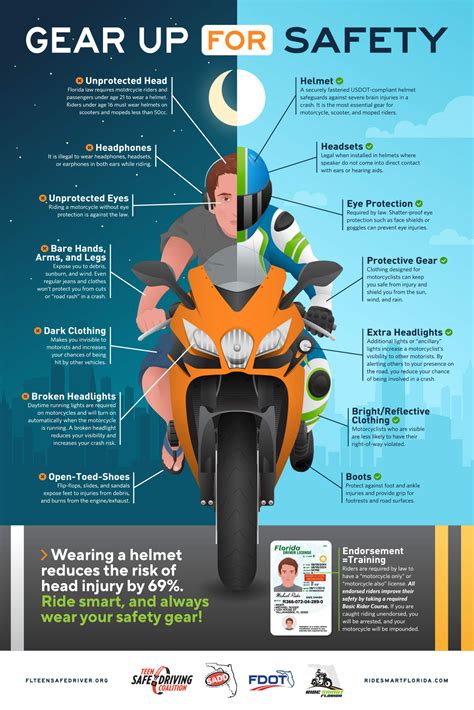Motorcycle Rider Self-Care and Safety: A Comprehensive Guide
Riding a motorcycle is exhilarating, offering a sense of freedom and adventure unlike any other mode of transportation. However, it's crucial to remember that motorcycling also carries inherent risks. Maintaining both your physical and mental well-being, along with practicing diligent safety measures, is paramount to enjoying the open road responsibly. This guide delves into essential aspects of motorcycle rider self-care and safety, ensuring you're equipped to handle the challenges and rewards of riding.
What are the most important safety precautions for motorcycle riders?
This is arguably the most crucial question for any motorcyclist. Prioritizing safety shouldn't be an afterthought; it should be interwoven into every aspect of your riding experience. Here are some key safety precautions:
- Gear Up: Always wear appropriate safety gear, including a DOT-approved helmet (full-face is recommended), protective jacket and pants (leather or abrasion-resistant textile), riding gloves, and sturdy boots. This gear significantly reduces the severity of injuries in an accident.
- Defensive Riding: Assume other drivers can't see you. Constantly scan your surroundings, anticipate potential hazards, and maintain a safe following distance. Be prepared to react to unexpected situations.
- Motorcycle Maintenance: Regularly inspect your motorcycle for mechanical issues. Ensure your tires are properly inflated, your brakes are functioning correctly, and all lights are working. Proper maintenance significantly reduces the risk of mechanical failures while riding.
- Ride Sober: Never ride under the influence of alcohol or drugs. Impaired riding drastically increases the risk of accidents and fatalities.
- Ride Within Your Limits: Don't push yourself beyond your skill level or the motorcycle's capabilities. Start with shorter rides and gradually increase your experience and distance as your confidence grows.
- Visibility: Wear bright clothing and use additional lighting, especially at night or in low-visibility conditions.
How can I improve my motorcycle riding skills?
Continuous improvement is key to becoming a safer and more confident rider. Consider these avenues:
- Motorcycle Safety Courses: Enroll in a motorcycle safety course offered by organizations like the Motorcycle Safety Foundation (MSF). These courses provide valuable training in essential riding techniques and safety procedures.
- Practice Regularly: The more you ride, the more comfortable and proficient you'll become. Practice in a safe environment, gradually increasing the difficulty of your riding scenarios.
- Learn from Experienced Riders: Ride with experienced and responsible riders who can offer guidance and feedback.
- Advanced Riding Techniques: Consider taking advanced riding courses to learn techniques like cornering, braking, and emergency maneuvers.
What are the common physical and mental health challenges faced by motorcycle riders?
Motorcycling, while enjoyable, can pose physical and mental health challenges:
- Physical Strain: Riding for extended periods can cause muscle fatigue, back pain, and neck strain.
- Weather Exposure: Riders are exposed to the elements, leading to potential issues like sunburn, cold, and rain exposure.
- Stress and Anxiety: The inherent risks of motorcycling can lead to stress and anxiety, especially for new riders.
- Road Rage: Dealing with aggressive drivers can contribute to stress and anger.
How can I maintain good physical and mental health while riding?
Addressing these challenges requires proactive self-care:
- Physical Fitness: Maintain good physical fitness through regular exercise to improve stamina and reaction time.
- Ergonomic Adjustments: Adjust your motorcycle's controls and seating position to minimize strain.
- Proper Hydration and Nutrition: Stay hydrated and eat nutritious meals before and during long rides.
- Stress Management: Practice stress-reducing techniques like meditation, yoga, or deep breathing exercises.
- Regular Breaks: Take regular breaks during long rides to stretch and rest.
What are some tips for staying safe on long motorcycle trips?
Planning is crucial for safe long-distance riding:
- Route Planning: Plan your route carefully, considering road conditions, traffic, and rest stops.
- Regular Maintenance Checks: Perform thorough pre-trip inspections and carry necessary tools and supplies.
- Packing Strategically: Pack light but ensure you have essential items such as rain gear, first-aid kit, and extra layers of clothing.
- Buddy System: If possible, ride with a friend for added safety and support.
- Communication: Carry a cell phone and inform someone of your itinerary.
By prioritizing self-care and adhering to strict safety protocols, motorcycle riders can significantly reduce their risks and enjoy the thrill of the open road responsibly. Remember, safety is not just about avoiding accidents; it's about enjoying the journey to the fullest while protecting your well-being.

